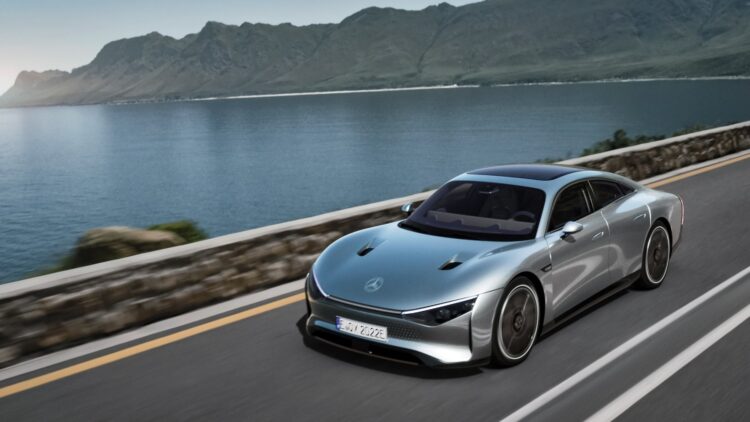The search for renewable energy sources has led to numerous innovations, one of the latest of which is solar paint. This revolutionary technology can turn surfaces into power-generative ones, and your car’s exterior will change.
The incumbent frontrunners in this field include Mercedes-Benz and other automobile innovators who have started exploring the use of this innovative material. This is how this solar paint works, what’s good about it, and how it may change the future of renewable energy.
How this solar paint works to turn any surface into a power generator
Solar paint is a thin paste material that comes with photovoltaic elements which can convert light into electricity. It is only 5 micrometers thin and can be applied on any material or curved shape, such as fenders and roofs. When the solar-active layer is deployed, it collects the sunlight and transfers the energy to the high-voltage electric vehicle (EV) battery.
Unlike traditional solar cells, which are often inflexible and can be damaged easily, this provides a means of energy generation all over the car body. The efficiency rate of the system is 20%, and the performance is comparable to that of standard solar panels, making the system viable for green power solutions.
According to Mercedes-Benz, if a mid-size SUV had solar paint, it could produce enough electricity to propel the car more than 7,400 miles per year under laboratory conditions. In regions with relatively low sunlight exposure, cars coated with solar paint can recharge enough energy for daily use.
For example, in Los Angeles, an EV can produce up to 34 miles of power daily, more than the city’s average daily trip length of 29 miles. Furthermore, it works when the car is stationary or turned off, and the solar paint constantly recharges the battery.
This feature minimizes the dependency on charging stations and puts forward solar paint as the next-generation solution to the problem of energy sustainability for EVs.
The surprising versatility of solar paint beyond cars and its potential to transform cities
The versatility of solar paint does not just end on cars. Another is that it has other uses because it can stick to any surface, no matter how curved or complex. From the roofs of people’s homes to the infrastructure of cities, the paint can make ordinary objects generate renewable energy.
Furthermore, Mercedes-Benz has pointed out that solar coating can produce excess energy, which could be used to introduce bidirectional charging. This means that power from a solar-painted car could be channeled to a home energy network in the event of high electricity demand.
That integration could shift the paradigm of how energy is to be stored and delivered in smart cities. One of the most noticeable advantages of solar paint is that it can be reused and applied repeatedly. In contrast to most present-day solar cells, which use scarce elements and silicon, this paint is produced from nonpoisonous and easily obtainable ingredients.
It is also easier to recycle and, therefore, environmentally more suitable for large-scale production. Another benefit is cost efficiency, one of the most popular goals for using PPoS.
The current thin, paste-like material is more affordable than the standard solar panels, and the significant number of uses might drive the cost of production even lower. From the consumer’s perspective, the savings that could be made on fuel or electricity bills in the long run could make solar paint a viable investment.
Challenges ahead for solar paint technology and the path to mass adoption
However, with solar paint, there is potential for the future, but there are hurdles to overcome. Mercedes-Benz has not explained how this paint will be applied to vehicles, and the possibility of scaling up the technology is unclear. Besides, its efficiency directly depends on the specific characteristics of the environment, such as the intensity of sunlight and location in some geographical areas.
Nevertheless, as it became apparent while researching, the invention of solar paint demonstrates that the future of integrating renewable energy systems remains excellent. With more automobile giants like Mercedes-Benz and Toyota searching for new materials, the concept of energy self-sufficient cars and houses is not far from becoming a reality.
Solar paint is one of the most significant breakthroughs in the clean energy sector that embraces sustainability flexibly. From running electric cars to converting our cities into energy-producing complexes, they can be used in countless ways.
When these scientific advancements are made, the idea of solar paint may change the way people produce and use renewable energy sources that can help make the planet a better place to live.

